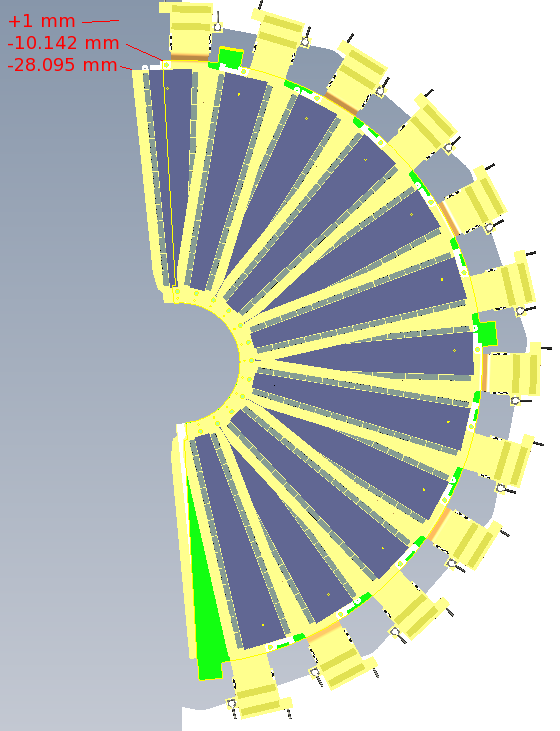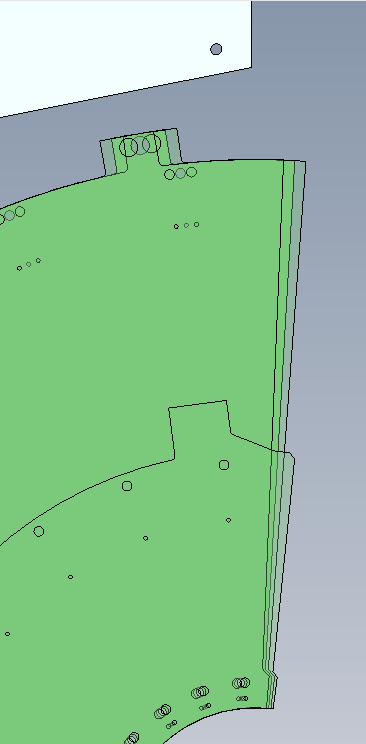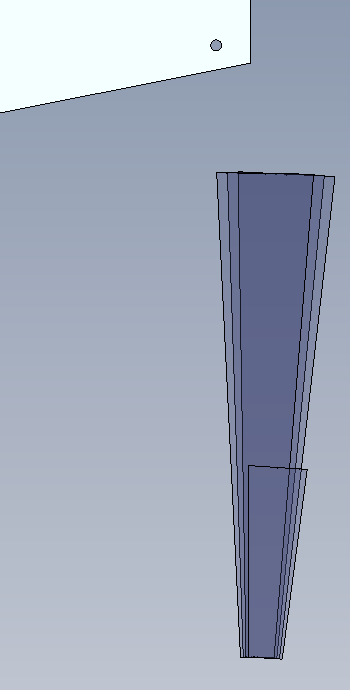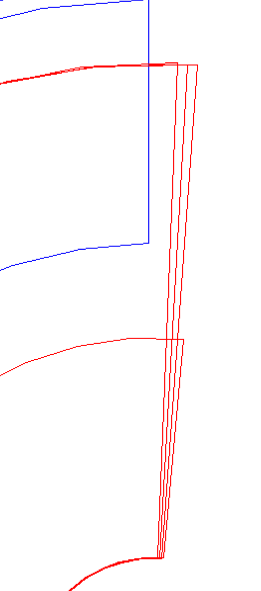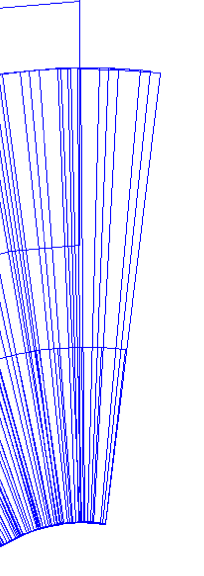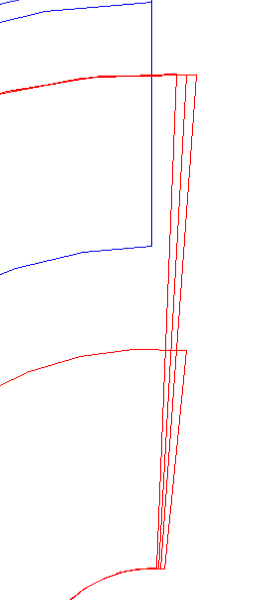In white is the big wheel support plate, which has an exact vertical edge 1 mm to the right of the midplane.
The station-1 support plane is shown in green with yellow outline. Because of the rotation of the plane, its leftmost point crosses the midplane by 10.107 mm. The HDIs protrude beyond the support plane, with the leftmost point at -23.296 mm.
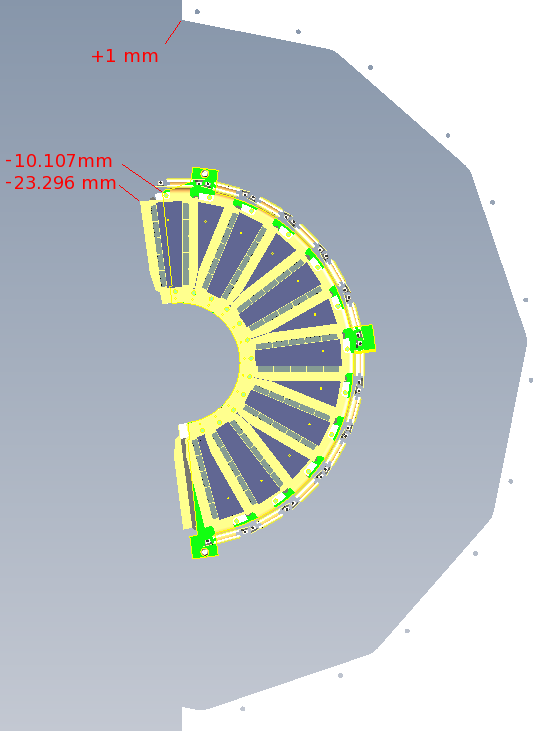
Same as above - big wheel support in white (+1 mm), station 2 support plane in green with yellow outline (-7.266 mm), HDI in pale yellow (-25.307 mm).
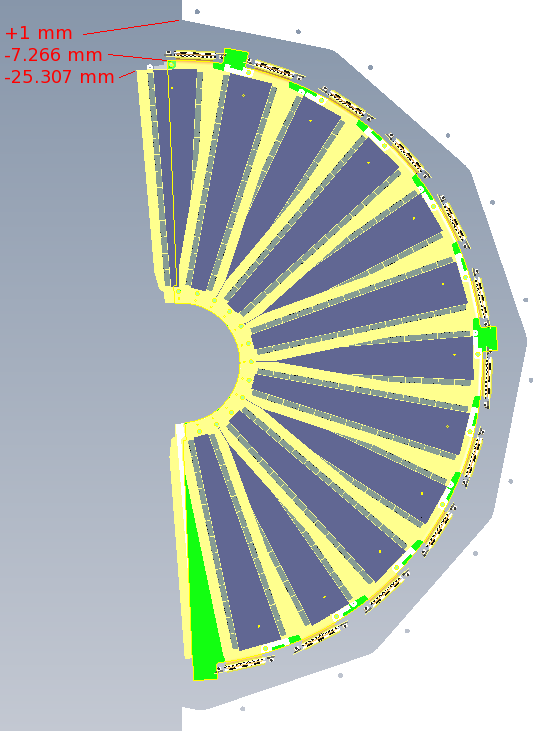
Same as above - big wheel support in white (+1 mm), station 3 support plane in green with yellow outline (-13.015 mm), HDI in pale yellow (-30.876 mm).
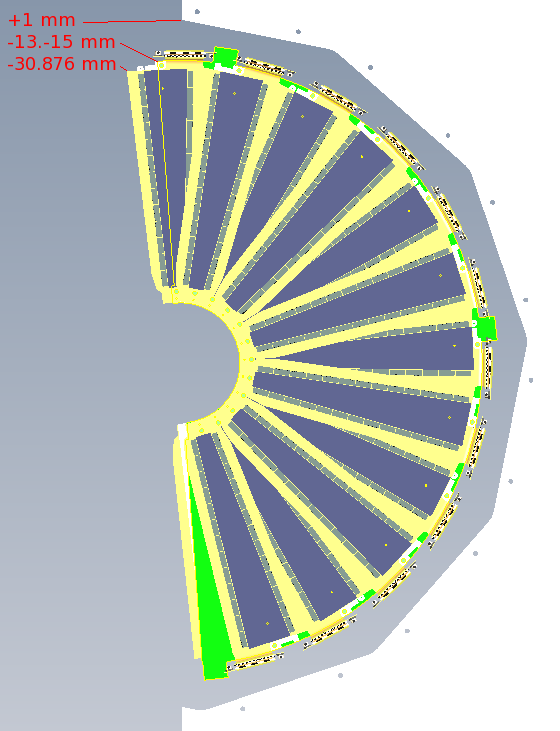
Same as above - big wheel support in white (+1 mm), station 4 support plane in green with yellow outline (-10.142 mm), HDI in pale yellow (-28.095 mm).
